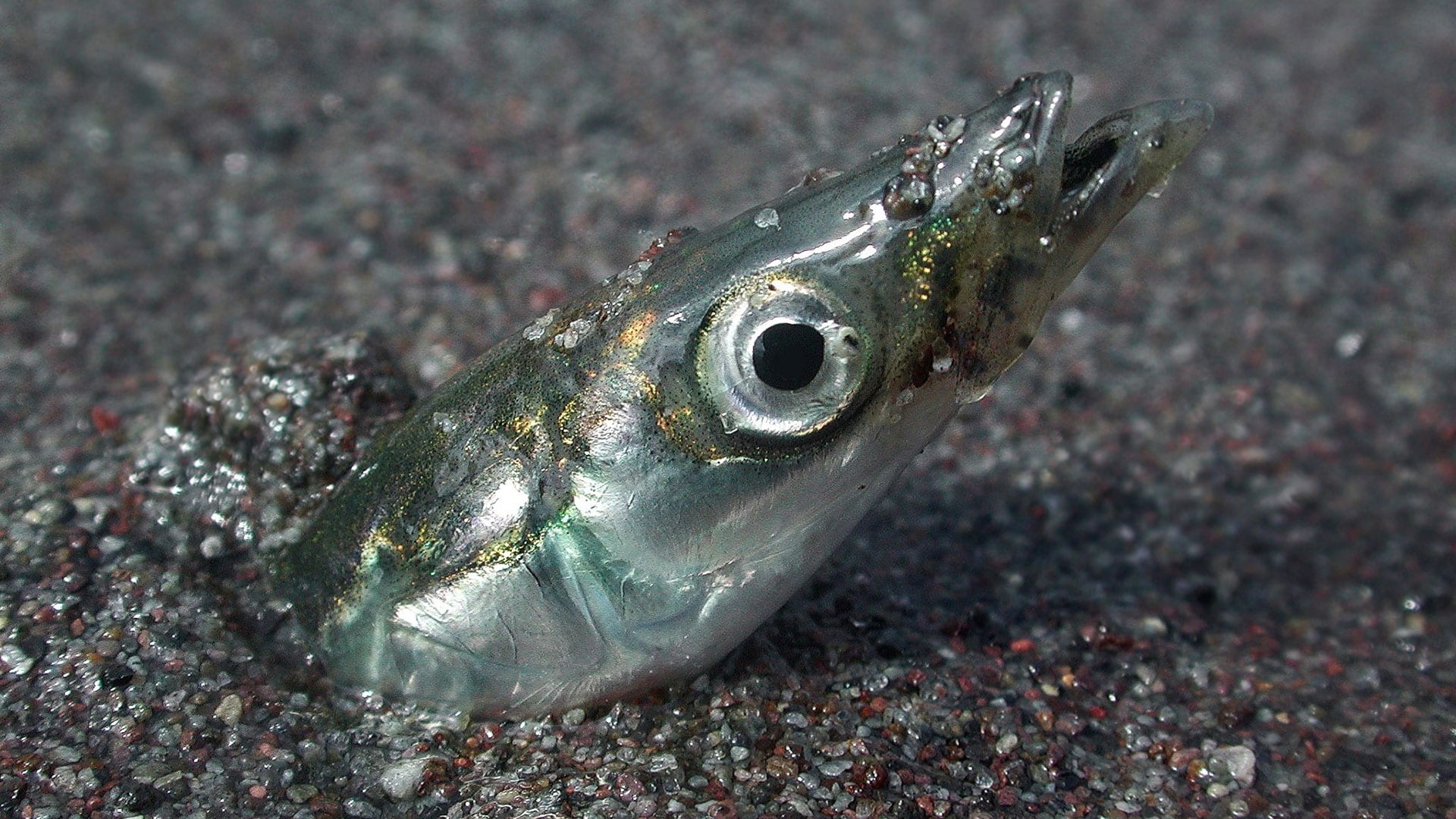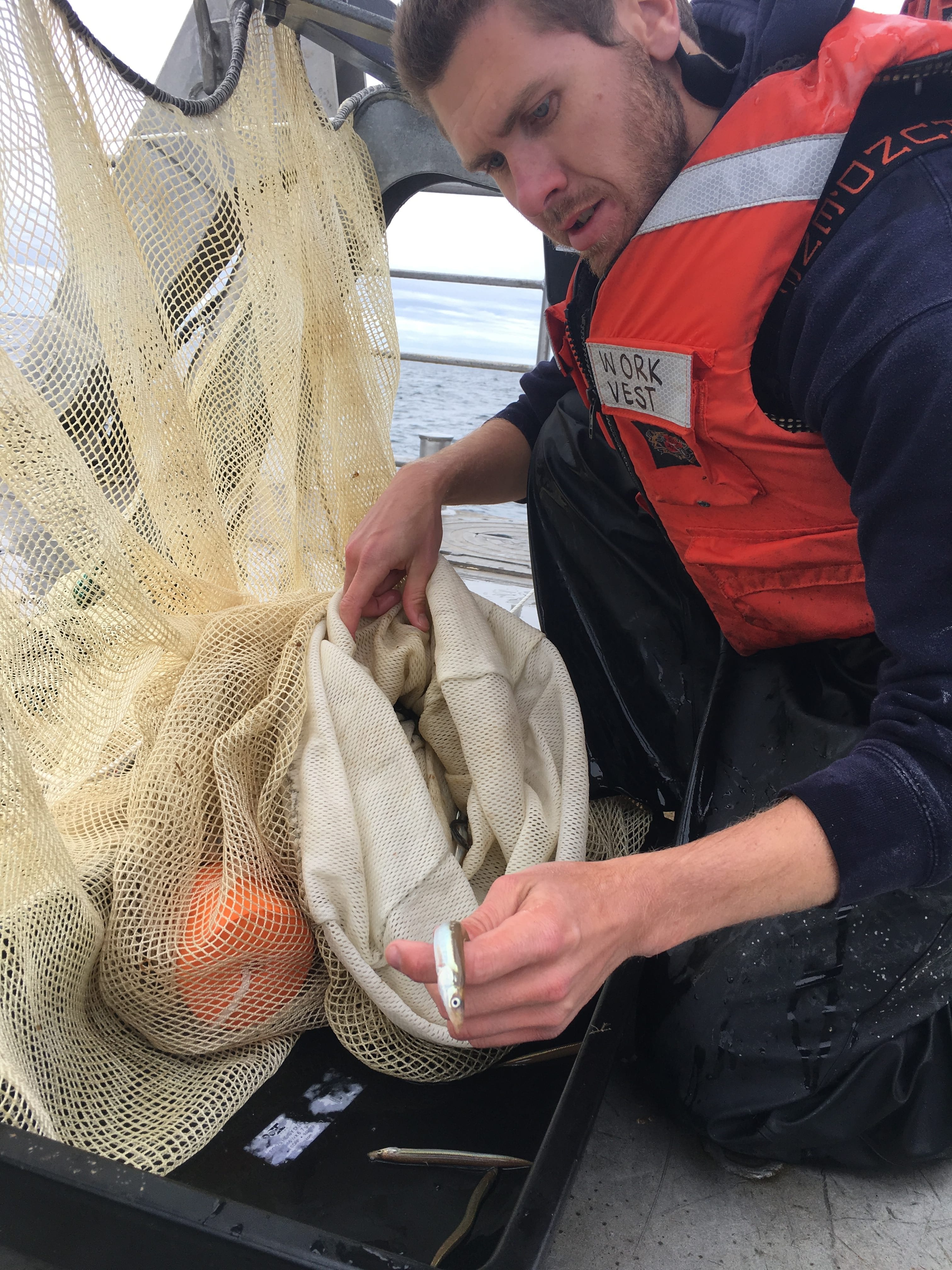Now you see me, now you don’t
A big mystery surrounding some tiny divebombing fish
By Evan Lubofsky | March 24, 2020
A sand lance darts into the sandy seafloor off Stellwagen Bank to hide from predators and quickly re-emerges. (Video courtesy of Page Valentine, U.S. Geological Survey)

Sand lance—tiny, eel-like fish that squirm their way through shallow waters of the Pacific and Atlantic Oceans—often elude their predators by divebombing straight into the seafloor without tapping the brakes. These wiggly fish can play ‘catch me if you can’ with the best of them, but even with their lightning-fast speed and ability to blast through the sandy bottom, things don’t typically end well for them.
“Sand lance are a really important forage fish for a wide range of marine animals, including cod, tuna, seals, and whales,” says Justin Suca, a graduate student in the MIT-WHOI Joint Program in Oceanography. “Sea birds like puffins and terns also rely on these fish as food for their chicks.”

Sand lance may be a bit too predictable in terms of where they hide, but there’s at least one unsettling mystery surrounding these fish: Scientists are seeing wide fluctuations in both the abundance and distribution of sand lance from year to year. Joel Llopiz, a biologist at WHOI and Suca’s advisor, says this a problem, since sand lance availability has a direct effect on the abundance and distribution of the commercially-valuable fish that eat them.
“If you care about whales, bluefin tuna, or beautiful seabirds like puffins, you should care about sand lance,” he says. “Everything has to eat, and if something happens to their food, then you’re really affecting that species.”
Despite their critical importance in the marine food web, the fast and furious nature of sand lance has made it challenging for scientists to study them. Llopiz says traditional sampling methods and gear used during surveys “aren’t great for catching sand lance.” However, he and his colleagues have had success using a modified sampling net that works well, particularly when the fish are buried.
The researchers have been collecting larval, juvenile, and adult sand lance in Stellwagen Bank and the Great South Channel in Massachusetts to study their basic biology and ecology, and to investigate their population dynamics and factors that may be causing them to shift. Suca says this information will help inform management and conservation efforts for sand lance and their predators.
“Since sand lance are such a nutritious source of food for a range of marine animals, they’re vulnerable to predation even when burrowed in bottom sediments,” says Suca. “But they are also vulnerable to a range of human impacts including sand mining and warming conditions resulting from climate change. So knowing which areas we need to protect will be vital.”
This research is funded by Woods Hole Sea Grant and the U.S. Bureau of Ocean Energy Management via the National Marine Sanctuary Foundation.

